The use of agile as an approach to managing projects has been increasing dramatically over the last several years. PMI predicts that by the end of 2025, agile development methods will be used on 80% of all projects especially in the IT sector. Furthermore, research demonstrates the value that agile can have in decreasing product defects, improving team productivity, and increasing delivery of business value.
Introduction to the PMI-ACP® Exam
- Recognizing key Agile developments and definitions
- Applying the values and principles of the Agile Manifesto
- Mapping tools, techniques, knowledge, and skills to PMI’s six domains of Agile development
Implementing Value-Driven Delivery
- Focusing on business value
- Defining and prioritizing features in terms of user and stakeholder value
- Leveraging rapid feedback cycles
- Ensuring progressive elaboration of requirements
- Identifying Minimally Marketable Features for release planning
- Sharpening the requirements definition by agreeing the Definition of Done
Maintaining Stakeholder Engagement
- Engaging empowered business stakeholders
- Identifying stakeholders and their concerns
- Promoting effective collaboration and participation
- Communicating progress to help the organization make informed decisions
- Enabling knowledge sharing
- Building trust and managing expectations through shared success criteria
Boosting Team Performance Practices
- Forming cross-functional teams
- Establishing collaborative behaviors through group decision making
- Influencing teams to design their own internal work processes
- Empowering teams to self-organize
- Encouraging teams to estimate and track project progress
- Creating safe environments that allow teams to experiment
- Developing high performance teams
- Raising productivity by eliminating waste
- Coaching and mentoring styles that foster skill enhancement
Implementing Adaptive Planning
- Planning at multiple levels
- Applying rolling wave planning
- Leveraging progressive elaboration
- Employing empirical planning
- Balancing priorities and team capabilities
- Coaching the team to adjust cadences based on situational awareness
- Applying Agile Earned Value Measurement (EVM)
- Refining estimate ranges to reflect current levels of uncertainty
- Capturing measures of accepted work delivered in a specified time frame
- Controlling costs through quantitative measures
Problem Detection and Resolution
- Recognizing and mitigating risks
- Time Boxing to focus on immediate issues
- Engaging the team proactively to identify risks and create mitigation strategies
- Ensuring impediments are resolved and stakeholder expectations are adjusted
- Communicating risks and impediments
- Maintaining visibility with burndown charts, value stream mapping and Kanban boards
- Managing features, technical issues and defects with Backlog
Facilitating Continuous Improvement
- Tailoring the process
- Conducting frequent retrospectives to improve the team’s behavior
- Experimenting with new techniques and process ideas
- Evaluating work efficiency
- Removing no value adding processes
- Reducing Work In Progress (WIP).
May Intake
Don't miss out!
Don't miss out!
Share on:
